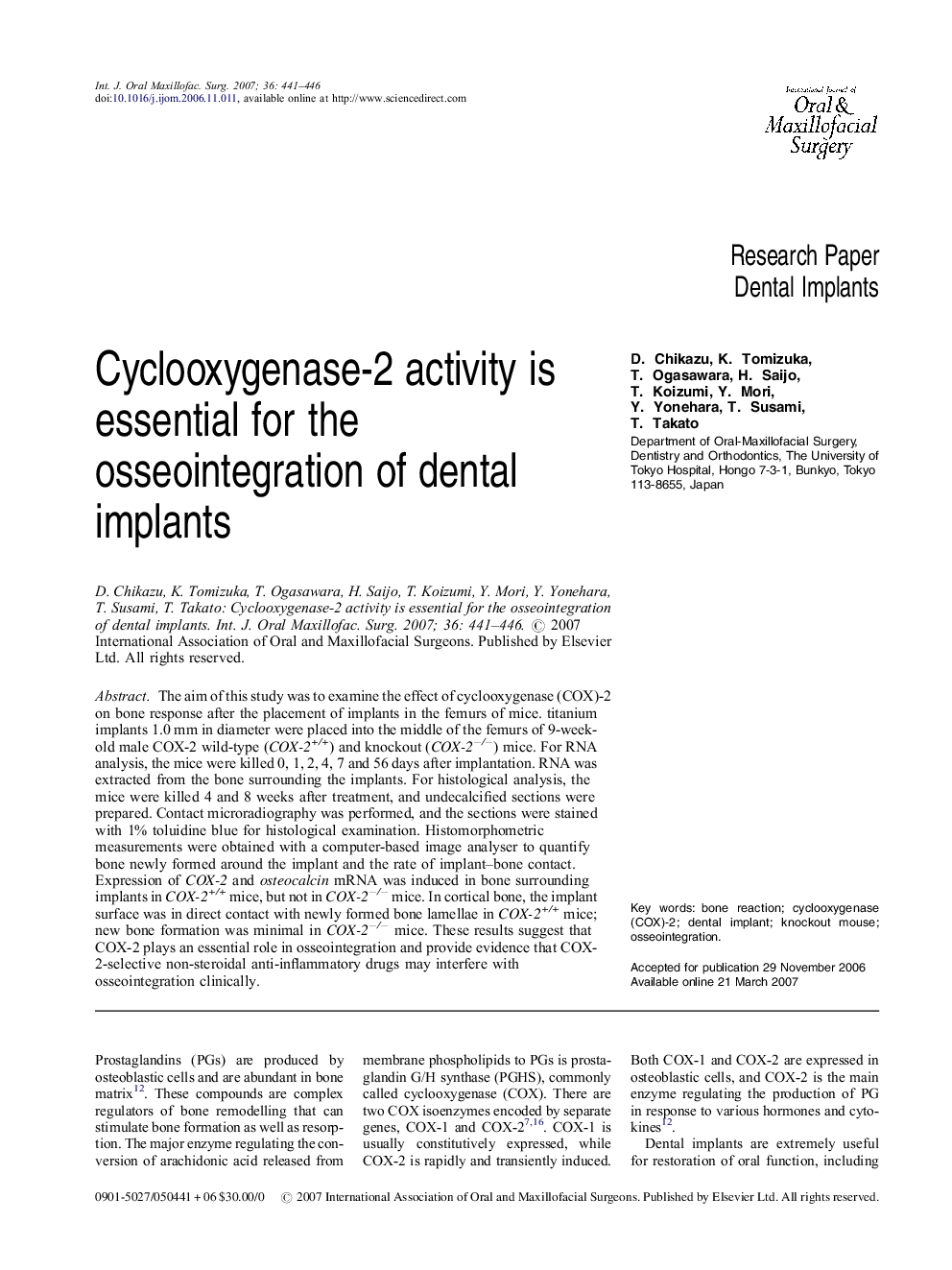| Article ID | Journal | Published Year | Pages | File Type |
|---|---|---|---|---|
| 3134749 | International Journal of Oral and Maxillofacial Surgery | 2007 | 6 Pages |
The aim of this study was to examine the effect of cyclooxygenase (COX)-2 on bone response after the placement of implants in the femurs of mice. titanium implants 1.0 mm in diameter were placed into the middle of the femurs of 9-week-old male COX-2 wild-type (COX-2+/+) and knockout (COX-2−/−) mice. For RNA analysis, the mice were killed 0, 1, 2, 4, 7 and 56 days after implantation. RNA was extracted from the bone surrounding the implants. For histological analysis, the mice were killed 4 and 8 weeks after treatment, and undecalcified sections were prepared. Contact microradiography was performed, and the sections were stained with 1% toluidine blue for histological examination. Histomorphometric measurements were obtained with a computer-based image analyser to quantify bone newly formed around the implant and the rate of implant–bone contact. Expression of COX-2 and osteocalcin mRNA was induced in bone surrounding implants in COX-2+/+ mice, but not in COX-2−/− mice. In cortical bone, the implant surface was in direct contact with newly formed bone lamellae in COX-2+/+ mice; new bone formation was minimal in COX-2−/− mice. These results suggest that COX-2 plays an essential role in osseointegration and provide evidence that COX-2-selective non-steroidal anti-inflammatory drugs may interfere with osseointegration clinically.
